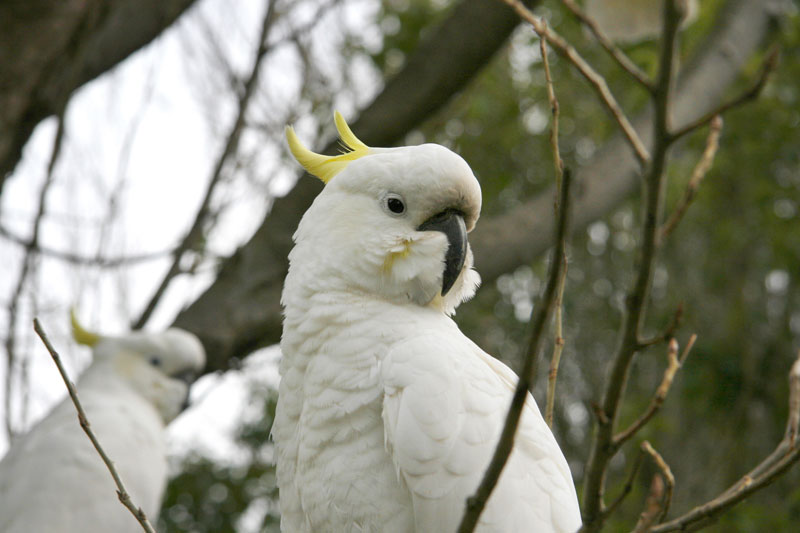By Susan Myers and Tim Dolby
This national park on the easterly slopes of the Otway Ranges near Lorne and bordering the coast, protects some of Victoria’s most beautiful forests. The vegetation of this 26,000-ha park is mainly wet, temperate rainforests of blue Gum, Mountain Ash and Messmate. As moisture-laden south-westerly winds arrive off the Sothern Ocean they are intercepted by the Otway Ranges, which creates high rainfall, nurturing the floristically diverse rainforests. The drier north – eastern section of the park gives way to heathland on sandy soils. The plant communities are particularly interesting: the heathlands share affinities with the Grampians, while the wet forests are similar to those of Tasmania.
Not only are this park and the general area superb for birding but the scenery of the Great Ocean Rd, and the waterfalls and forest on the eastern slopes of the Otway Ranges, are internationally famous. Many species found in the temperate forests east of Melbourne- such as the superb Lyrebird and Pilotbird-are absent from the Otway Ranges forests but a number of other highly sought – after species, notably Rufous Bristlebird, can easily be found here.
How to get there
From Melbourne take the M1 west to Geelong; from there follow signs to the Great Ocean Rd (B100) and the seaside town of Lorne. The park is about 150km from Melbourne. The magnificent coastal vistas along the road are not to be missed. There are some good areas for birding in the park behind Airey’s Inlet, but the best birding is near Lorne. Turn inland at Lorne and follow signs to the Great Otway National Park (Melway 518). There is also an extensive network of 2WD and 4WD tracks throughout the parks, although some are closed during winter.
Where to see the birds
There are a number of excellent walks, including those of the Cora Lynn Falls and Moggs Creek Track. One of the best spots for birding is to be found at the Sheoak Picnic Ground and along the nearby Sharps Track, both within a 15 minute drive from Lorne. At the picnic ground it is possible to see Gang-gang cockatoo, Satin Bowerbird or Bassian Thrush.
Follow the sign posts to Sheoak Picnic Ground along Allenvale Rd from Lorne (in the early morning, Red-necked Wallaby can regularly be seen on the road). Just before the picnic ground, tur right onto Sharps track. It is closed in winter but a 2Wd vehicle can easily transverse the first 10km or so at other times of the year.
The track follows the ridge: in the valley below lies a rich rainforest and a more open woodland with a healthy understory cover the ridge itself. In the early morning the melodious calls of resident Rufus Bristlebird will certainly be heard and invariably the birds will make an appearance on the track.
Other birds of interest include Yellow-tailed Black-Cockatoo, Brush Bronzewing, Australian King Parrot, Blue-winged Parrot (which in spring and summer can often be seen feeding on the track), White-throated Needletail (in summer) and a range of honeyeaters, including Crescent, as well as Rose Robin, Crested Strike-tit, the Otway race of Grey Currawong and Forest Raven.
In the valley below, which can be accessed by the Canyon Track near the Allenvale Rd-Sharps Track intersection, it is possible to find the elusive Olive Whistler or Bassian Thrush.
With more luck the Dusky Antechinus-often seen during the day-may be spotted running across the trail. Spotlighting on Sharps Track can be very rewarding-the large hollow-bearing trees in the valleys are home to many of the Yellow-bellied Glider, and you may see Powerful Owl, as well as Masked Owl with a bit of luck. Southern Boobook and Australian Owlet Nightjar are common and even seeing Feathertail Glider is a possibility here.
Spot-tailed Quoll and Long nosed Potoroo have also been recorded in the Park.
Where is Qii House
Qii House is in the same neck of the woods 550m above sea level in an ancient rainforest eco system, with a plethora of native birdlife, fauna and flora for you to experience all year round. We have a reference library, hiking sticks and binoculars to assist you in your adventures.

